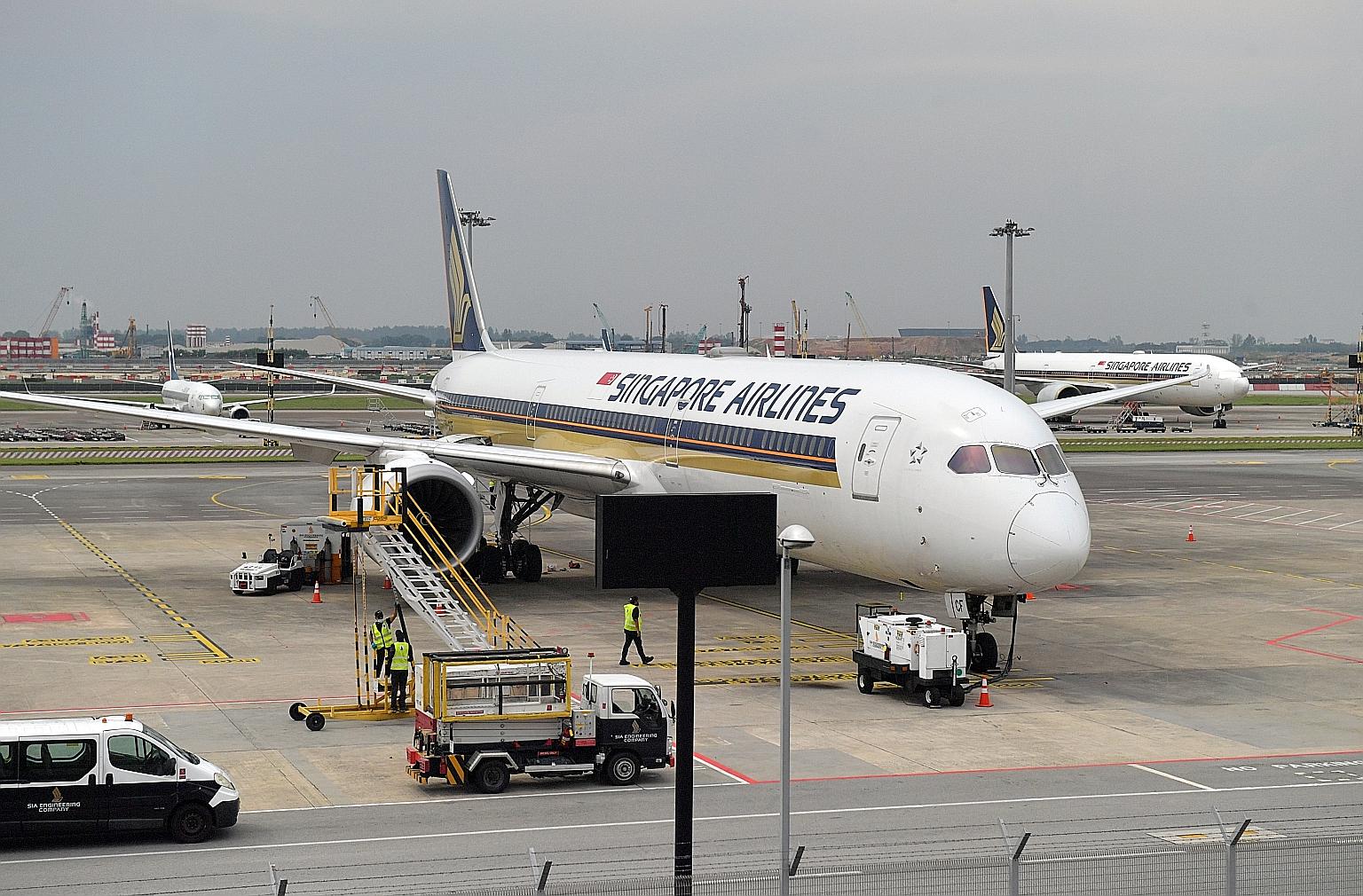SIA narrows quarterly losses
This is despite challenging quarter with air travel demand still tentative, borders closed
Sign up now: Get ST's newsletters delivered to your inbox

Singapore Airlines jets at Changi Airport. The company said its strong balance sheet and access to liquidity enabled it to position itself for growth as the aviation sector recovers from the impact of the pandemic.
ST PHOTO: ALPHONSUS CHERN
Follow topic:
Sequential improvement in passenger numbers and a robust cargo performance saw Singapore Airlines (SIA) cut its first-quarter loss to $409 million, from $1.123 billion a year earlier.
This came on the back of a 52 per cent improvement in revenue to $1.295 billion for the three months to June 30, compared with $851 million in the same period last year.
The company also had a stronger balance sheet as at June 30, thanks to $6.2 billion raised via a Mandatory Convertible Bonds (MCB) issue during the quarter.
That said, the quarter remained a challenging one for the airline as borders remained closed and air travel appetite remained tentative.
SIA's passenger traffic (measured in available passenger-kilometres) rose to 28 per cent of pre-Covid-19 levels by June 30 as the airline put in place a calibrated resumption of flights. The passenger load factor (PLF) for the first quarter increased 4.6 percentage points year on year to 14.8 per cent.
But the story on the cargo side was much brighter.
Cargo flown revenue grew by $214 million or 32.4 per cent as the resumption in passenger flights contributed to a 46.9 per cent increase in cargo capacity and 68.2 per cent of loads carried.
Cargo load factor increased 11.3 percentage points to 89.1 per cent, while yields moderated from the exceptionally high levels during the same period last year.
"Overall, the strong cargo revenue performance for the first quarter reflected the healthy demand fundamentals and an ongoing capacity crunch in the sector," the company said yesterday.
Reflecting the increased activity, net fuel costs rose to $360 million during the quarter, from $155 million in the same three months in 2020.
Despite the challenging conditions, the company's balance sheet remains strong.
Shareholder equity was $22.3 billion as at June 30, a rise of $6.4 billion compared with March 31 this year. Cash and bank balances rose by $5.9 billion to $13.7 billion, primarily due to the issuance of MCB. The debt-equity ratio fell from 0.9 times to 0.67 times.
In addition to the cash on hand, the group continues to retain access to $2.1 billion of committed lines of credit that remains undrawn at present.
The company said its strong balance sheet and access to liquidity enabled it to navigate the crisis and position itself for growth as the aviation sector recovers from the impact of the pandemic.
The company's monthly operating cashburn had fallen to about $100 million per month at end-June, compared to about $350 million at the height of the crisis in mid-2020.
SIA has an operating fleet of 164 passenger aircraft and seven freighters. As at end-June this year, the group's network covered 63 destinations, including Singapore. The airline expects to reinstate 33 per cent of pre-Covid-19 capacity by end-September.
SIA's shares closed up 1.17 per cent at $5.18 yesterday.

